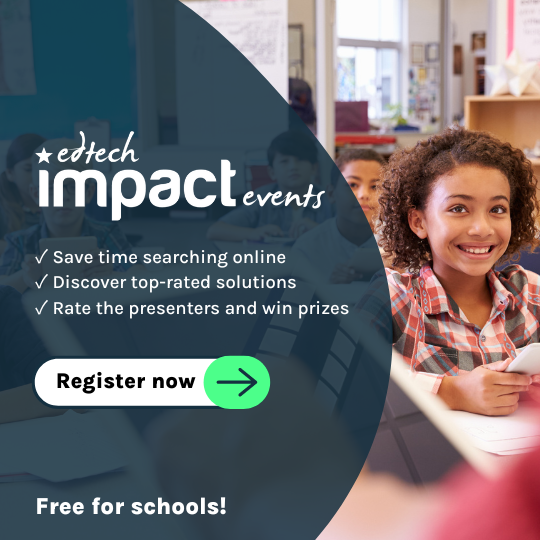Educator insight: Richard Campbell, Kyungsung University, South Korea
Many thanks to Richard Campbell, an English professor at Kyungsung University in South Korea for his thoughts on EdTech and its implementation and use. This is a full version of the interview that appeared in our schools newsletter of 29 June 2023.
Click here to subscribe and to receive this free fortnightly update.
Richard has over 20 years of teaching experience across all levels of education and holds a doctorate in education. He is passionate about promoting language learning and using innovative approaches, including AI writing tools, to inspire his students.
1. Foundations for success
The best decisions are made when you bring everyone into the conversation. So, chat with the teachers, and ask the students; their feedback is crucial to make sure the EdTech we bring in actually fits their needs and learning styles.
It’s always great to get a sense of the tool in a real-life setting before you buy. If you can, pay a visit to schools using it. Seeing it in action can give you a better feel for whether it’s the right fit for your school.
Always try out a product before committing to buy it. Test it out in a small number of classrooms or with a group of engaged colleagues.
2. Safety first
Everyone gets excited by the latest trends, but it’s important to not jump in without doing your homework. Spend time really looking into whether a new tool or resource will work for your specific needs and goals before you commit.
Our dedicated teachers will be the ones actively using these resources in their day-to-day teaching. Don’t cut corners on their professional development; it’s essential that they are confident and comfortable with any new tech tools.
Don’t forget about the importance of data privacy and security. When you’re choosing new EdTech, make sure it’s compliant with privacy laws and has solid security measures in place to keep everyone’s information safe.
3. Prioritize students’ experience
Richard identifies three top tips to deliver effective digital transformation.
a) Projects that focus on improving the student learning experience had the greatest resonance and influence during our transition. We had previously installed new technology without first considering how it would benefit our students’ education.
b) Early and widespread participation from students, teachers, administrators and parents not only helped build consensus around the modifications but also yielded invaluable insights.
c) My experience with digital transformation has shown me that achieving success requires a mindset of constant improvement. I saw great value in periodically reviewing the technology we’d used and in being adaptable to new information.
4. The rise of AI
Artificial Intelligence, and more specifically, ChatGPT, represents a pivotal development in the future landscape of EdTech. This ground-breaking technology has profoundly revolutionized instructional methods. In my own experience, I’ve found ChatGPT to be an indispensable teaching assistant, streamlining and enhancing my teaching process. I frequently utilize it to generate innovative ideas for lesson plans, design engaging quizzes, conduct academic research, and much more.
🎒 Richard Campbell’s EdTech toolkit…
- I strongly recommend using ChatGPT as a virtual teaching assistant and tutor. ChatGPT offers individualised assistance, reinforcing concepts, and answering questions. Its ability to adapt to each student’s needs greatly enhances the learning experience and promotes deeper subject understanding.
- My students and I have had great success using Book Creator to publish and share interactive books. What’s really impressive is the community support it offers, allowing educators and students to collaborate and share ideas.
- Seesaw is a game-changer for students’ ability to create digital portfolios in the classroom. It empowers students to showcase their work, receive feedback, and reflect on their learning journey.
- Sphero is an exciting hands-on coding tool that introduces students to the world of programming and robotics. I’ve witnessed how it sparks enthusiasm and curiosity among students, fostering critical thinking, problem-solving and computational skills.
- When it comes to engaging students in coding and storytelling across various subjects, Minecraft Education Edition is a game-changer. Its immersive learning experience and vast possibilities make it suitable for any classroom. Plus, the exceptional support and active community surrounding Minecraft Education Edition provide valuable resources and inspiration for educators.
- Personally, I’ve relied on Evernote for nearly a decade to enhance my academic research and lesson planning. It has become an indispensable tool for organizing notes, capturing ideas, and collaborating on projects. It’s versatility and user-friendly features make it an essential companion for teachers.
- I’m truly impressed by the collaborative potential of CoSpaces, a virtual reality platform. It allows students to work together and create captivating games, stories, and more in a virtual environment. By fostering creativity, collaboration, and teamwork, CoSpaces enhances the learning experience and brings lessons to life.
- I’ve witnessed the incredible impact of stop motion animation on students’ creativity. Stop Motion Studio provides accessible tools that enable students to express their ideas through animated storytelling. It’s a fun and engaging way to encourage imaginative thinking and artistic expression in the classroom.
- TedEd has been a fantastic resource for educational videos, offering a wide range of topics and subjects. I find that combining these videos with interactive tools like ChatGPT allows me to create personalized and engaging lessons that cater to each student’s unique learning style. It sparks curiosity and promotes active learning.
- When it comes to game development, Bloxels is a fantastic tool that allows students to unleash their creativity. By designing, building, and playing their own games, students develop important skills such as logical thinking, problem-solving, and digital literacy. It’s a fun and engaging way to integrate technology into the curriculum.
Updated on: 29 June 2023

